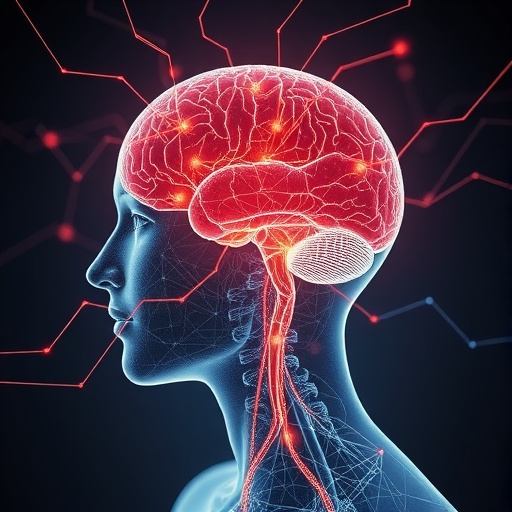In groundbreaking research, scientists have turned their attention to the SCN9A gene, which encodes a critical component of human pain perception, the voltage-gated sodium channel NaV1.7. A multitude of studies have identified how pathogenic variants in this gene can lead to drastically different pain sensations in affected individuals: loss-of-function variants result in pain insensitivity, while gain-of-function mutations, such as the well-known T1464I variant, can unleash severe pain conditions. This duality highlights the intricate balance required for proper sensory neuron function and underscores the need to explore the underlying mechanisms in human models.
The traditional approach to studying the effects of SCN9A mutations primarily involved cellular and animal models, which, while valuable, often do not encapsulate the complex circuitry and emergent properties of the human nervous system. To bridge this gap, researchers have developed human assembloid models, which allow for a more nuanced understanding of how SCN9A variants influence neuronal circuits. The innovation of these assembloids lies in their ability to mimic the dynamic interactions found in the human sensory pathway, thus providing a distinct advantage over conventional models.
To explore the functional consequences of SCN9A variants, researchers employed CRISPR-mediated gene editing technology to create frameshift mutations within the SCN9A gene. This genetic manipulation aimed to generate SCN9A knockout human sensory organoids (hSeO), enabling the team to observe the direct effects of SCN9A deficiency on sodium channel expression and sensory neuron behavior. The findings were significant: SCN9A KO hSeO exhibited markedly reduced expressions of both SCN9A mRNA and NaV1.7 protein, confirming the critical role of this gene in sensory neuron activity. Importantly, the expression levels of the sensory neuron marker POU4F1 remained unaffected, suggesting that the knockout process specifically impacted the sodium channel without disrupting overall neuron identity.
Calcium imaging techniques further revealed the functional ramifications of SCN9A loss-of-function. The researchers noted a distinct decline in spontaneous calcium activity in the SCN9A KO sensory organoids, aligning with earlier findings of hypo-excitability associated with sodium channel deficiency. This reduced activity signaled impairments in the generation of action potentials necessary for transmitting pain sensation, effectively solidifying the role of SCN9A as a central player in pain perception mechanisms.
In a parallel exploration, the researchers investigated the T1464I gain-of-function mutation, believed to be involved in paroxysmal extreme pain disorder. Using CRISPR-Cas9 technology again, they introduced the T1464I variant into a human-induced pluripotent stem cell line (hiPS), subsequently deriving sensory organoids. Verification through Sanger sequencing confirmed successful integration of the T1464I variant. Subsequent calcium imaging indicated that this mutation resulted in hyperexcitability among sensory neurons in the T1464I hSeO, corroborating earlier reports linking this variant to extreme pain sensations.
Shifting focus to circuit-level dynamics, the study unveiled the emergent properties of the neuron networks established within the assembloids. When spontaneous calcium activity was measured in control versus SCN9A T1464I models, significant differences in synchrony were observed. Analysis indicated a higher degree of synchronization in the hASA derived from the gain-of-function variant, suggesting that the T1464I mutation promotes a hyper-synchronized network. This observation aligns with the extreme and frequent pain incidents reported in patients harboring this mutation.
The implications of these findings extend far beyond the specific case of SCN9A variants. They underscore the potential of human assembloids as robust models for understanding the complexity of neurobiological disorders, particularly those involving sensory pathways. As the researchers continue to refine these models and investigate additional genetic variants, the significance of their work becomes increasingly apparent. Not only do they illuminate the genetic underpinnings of pain disorders, but they also pave the way for new therapeutic avenues aimed at modulating neuronal circuits to alleviate suffering.
The capacity of human assembloids to replicate neuronal circuit-level dysfunction underscores their utility as platforms for drug screening or testing potential therapies that could restore normal function. This research opens the door to a deeper exploration of how other genes may contribute to sensory processing disorders, leading to a more comprehensive understanding of neurogenetics and its potential for clinical application.
Moreover, the integration of advanced imaging modalities with sophisticated genetic editing techniques facilitates a comprehensive analysis of neuronal behavior in real-time. These tools enable scientists to observe how modifications in individual genes, such as SCN9A, can ripple through complex neural architectures, thus defining the landscape of human pain perception.
As advancements in technology and methodology continue to evolve, the opportunity to develop targeted therapeutics for pain and other sensory disorders seems promising. Ultimately, this research heralds a new era in neurobiology where understanding the genetic basis of pain is not just academic but has the potential to result in life-changing treatments.
The researchers are enthusiastic about the future applications of their findings, as they believe that the human assembloid model represents a significant leap forward in regenerative medicine and neuroscience. The intricate details revealed by their investigations into SCN9A not only shed light on a specific channel’s role but also exemplify the intricate interplay of genetics and neuron function. Such insights are poised to transform the landscape of pain management and neurological health in the years to come.
In summary, the investigation into SCN9A through the lens of human assembloids demonstrates the profound impact of genetic variations on neuronal circuitry and pain perception. As researchers delve deeper into these connections, the understanding of human sensory pathways becomes richer, offering hope for more effective treatments for those plagued by chronic pain conditions.
—
Subject of Research: SCN9A gene and its effect on pain perception through human assembloids.
Article Title: Human assembloid model of the ascending neural sensory pathway.
Article References:
Kim, Ji., Imaizumi, K., Jurjuț, O. et al. Human assembloid model of the ascending neural sensory pathway. Nature (2025). https://doi.org/10.1038/s41586-025-08808-3
Image Credits: AI Generated
DOI: 10.1038/s41586-025-08808-3
Keywords: SCN9A, pain perception, sensory neurons, human assembloids, CRISPR-Cas9, hyperexcitability, neuronal synchrony




